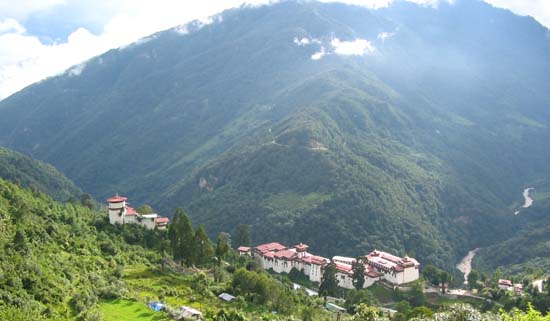Inclined walls of the Punakha Dzong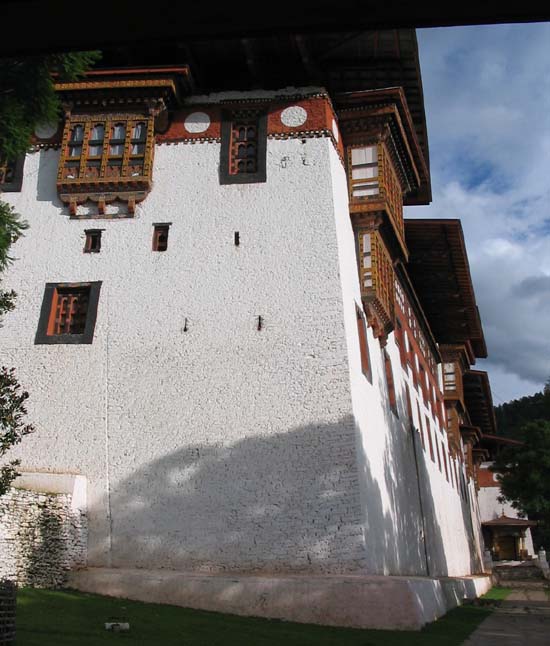
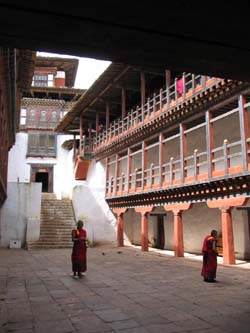 Those with profound interest in architecture and decorative arts will find Bhutan a truly fascinating and inspirational place to visit. The architecture of Bhutan carries overtones of design features patterned on those of Tibet and the Himalayas in general, however, in Bhutan they developed clearly Bhutanese characteristics.
Those with profound interest in architecture and decorative arts will find Bhutan a truly fascinating and inspirational place to visit. The architecture of Bhutan carries overtones of design features patterned on those of Tibet and the Himalayas in general, however, in Bhutan they developed clearly Bhutanese characteristics.
While Tibetan fortress style of architecture permeates the house, temple and monastic style of architecture from Ladakh in the Western reaches of the Himalayas to Kham region of Eastern Tibet, and is found north as well as south of the principal chain of the High Himalayas, in Bhutan the dzong, the fortress style of architecture, stands in a category of its own.
Massive in style, Bhutanese dzongs are essentially structures containing administrative offices of the government as well as temples and housing quarters for resident monks. Surrounding interior courtyards, the dzong exterior walls are typically slightly inclined in style of European medieval castles.
Dzongs of Paro, Thimphu, Punakha, Trongsa, Jakar, Trashigang, Mongar, or Simtoka Dzong near Thimphu all impress in their layout, lavishly decorated woodwork within, display striking carved posts and beams, nooks and niches harboring votive images, and above all by being sited in commanding positions, either at the confluence of rivers, on hilltops or spurs.
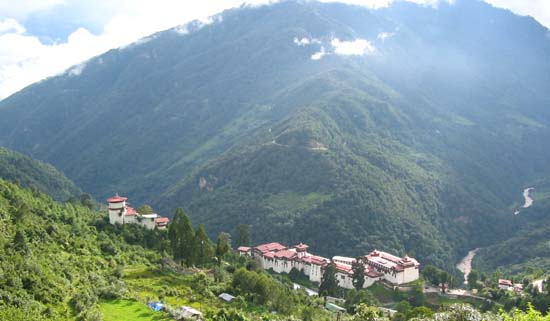 Trongsa Dzong
Trongsa Dzong
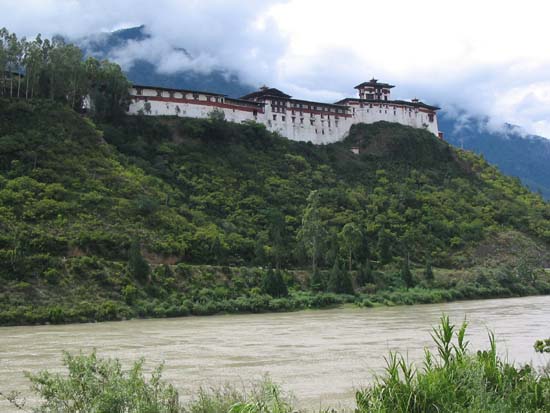 Wangdi Dzong
Wangdi Dzong
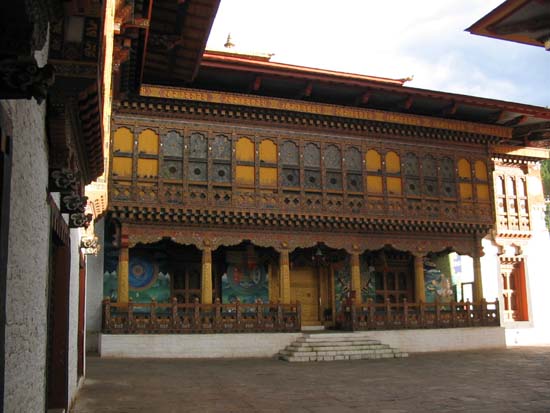 Temple within interior of a dzong
Temple within interior of a dzong
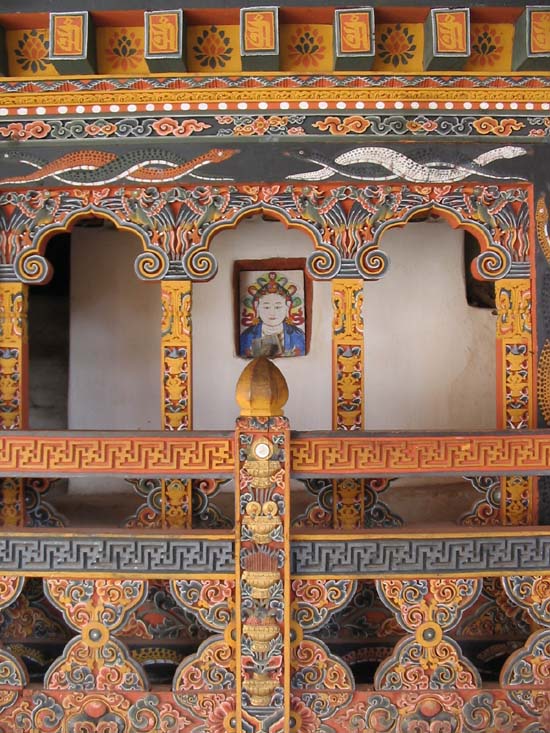 Intricate decorations on a dzong couryard building
Intricate decorations on a dzong couryard building
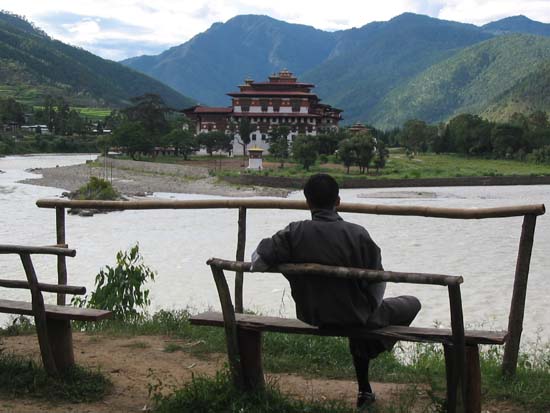 Punakha Dzong
Punakha Dzong
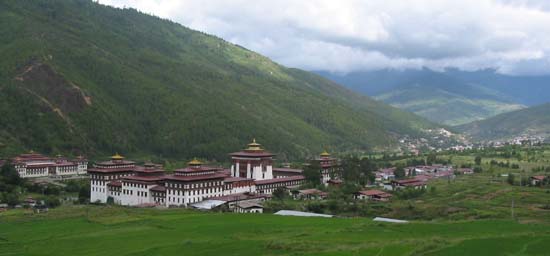 Thimphu Dzong
Thimphu Dzong
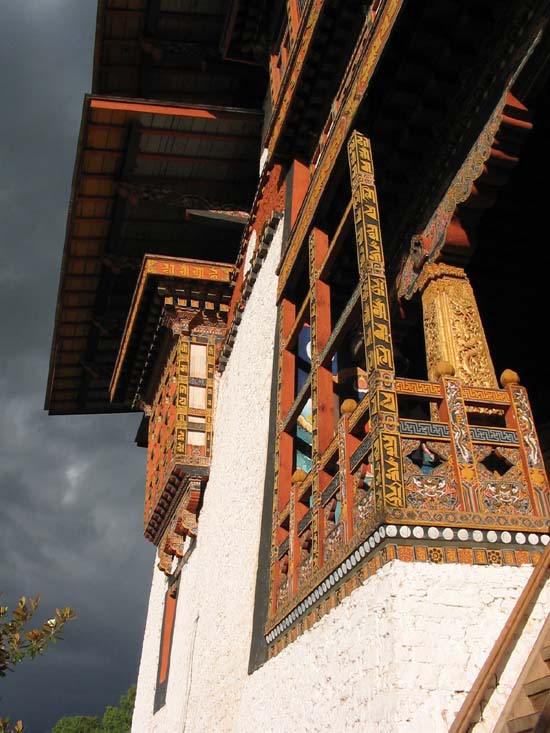 Exterior wall, window and main entrance balcony of the Punakha Dzong
Exterior wall, window and main entrance balcony of the Punakha Dzong
